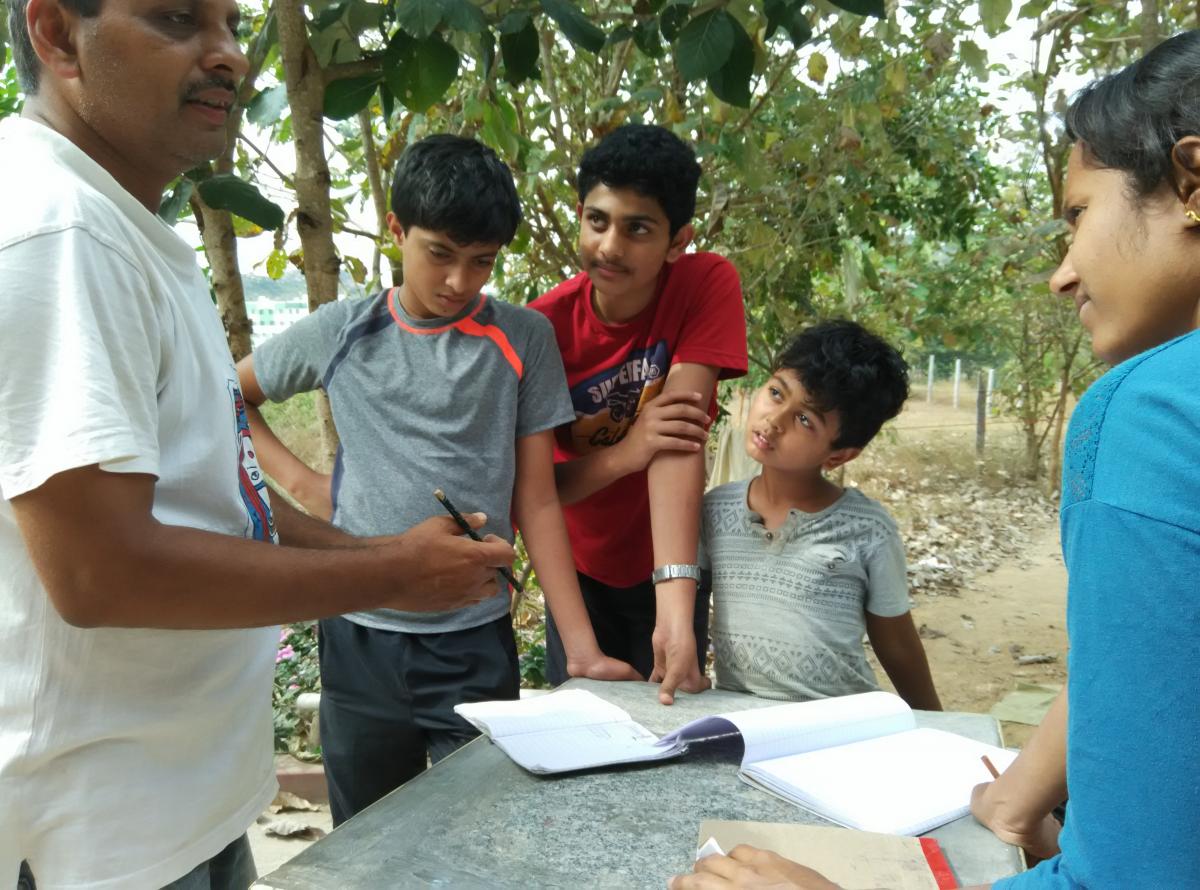Self-Directed learning provides a deep understanding of self. This connection with helps to live the life of a direction. Can we provide such environment to children which foster self directed learning?

How to create a self-directed learning environment
We believe that children can decide what they want to learn, how they want to learn, with whom they want to learn, how much they want to learn and how well they want to learn. In short we believe children can LEAD their own lives hence their own learning. Over the last 16 years we have been on a long and exciting journey following these beliefs. So here is what we think one needs to consider when putting together an environment that creates learning leaders.

Design to reach Nowhere
Shiva is excited about butterflies. He spends a lot of time catching them, talking to them, talking about them, releasing them. He makes them listen to his favorite songs and observes how they dance to them. He gives them his own names.
He has no need to display his growing knowledge, his understanding, and his passion to anybody. Personal journeys do not have a destination, the engine chugs endlessly.
Design to Fail

Sahil is designing stand-alone tippity taps. His tap leaks. He tries a quintal of m-seal, it still leaks. He starts again, it continues to leak. He tries a different way but does not succeed in stopping the trickle of water.
He has no need to hide his failure. He likes his disasters so much that he shows them off to everybody and is open to all suggestions. Learning endeavors do not end with a failure, they stress that learning (and life) is iterative.
Design to Accept
Twesha likes paper crafting (making things with paper and hand) all the time. He spends hours bending over reams of paper folding them to make guns, swords, robots, etc. from his imagination come alive in 3D. When he is not making paper models, he is making paperless models in his head.
There is no hurry to get Twesha to do something else. His passion and interest are the heavy core whose gravity will invariably and ultimately collate a lot of learning around itself.
Design to Collaborate

Varsha has not come here to learn. That is not her objective. Rather her agenda is to hob nob, to interact, to do things together, to co-create joy. What possibilities such an amalgamated day generates cannot be caught in words.
Varsha knows this. That is why in spite of occasional conflicts, in spite of sometimes being teased, and in spite of age, gender, language disparity – she fully embraces companionship. In the word “learning” – it is the energy of synergy that’s INGing.
Design Options
Dhrupad is learning division. Just that, everyday he chooses a different way of learning it — one day from a book, another day a video from Khan academy, yet another day he seeks out a peer to demonstrate, and sometimes even enjoys using some manipulatives.
He is able to make friends with division because he meets it in so many ways. The only standardization that education should offer each child is a multitude of choices for every learning.
Design to Discover

Radhika does not have many questions. Neither does she have many answers. She explores. Sometimes she does gardening, sometimes she reads stories, sometimes she makes sandwiches, sometimes she observes the night sky and sometimes she does nothing. But slowly, without warning, just like the shooting stars, learning pops out for her from nowhere – a new word, a scientific concert, a mathematical procedure, a social insight, …
It’s not that learning for her is random. It’s because we all know the joy of discovering it ourselves – that we just left it to happen to her. And you bet she is busy collecting.
Design to Expose
If you wanted to give gifts to Shreyas, give him gifts of opportunities. His inertia to try something new is huge, but he loves meeting people who do different things. And through these interactions with the personalities of the world, he is slowly growing his own map of possibilities. Every new interaction only shows to him that the highway called life is lined with magical mysterious unknown pathways.
It’s not my job to show him where to go. It’s his job as a learner to see what are the different places that he wants to go to.
Design to Reflect

At the fall of the day, the mood at Aarohi is usually quiet. Davin is thinking and so is Arsalan and Ansh and Skanda and Yashas. Questions that surround them everyday are different but essentially about the day, “What efforts did I put today?”, “How did each of my efforts change the quality of my day?”, “What will I do differently tomorrow?”
In the journey of life, it seldom matters how good I am, but it matters everyday how good my day was. A child is not getting education for tomorrow. The child is actually living a today. And one who lives a self-directed day, lives a Self-directed Life.
By Aditi Mathur and Ratnesh Mathur,The same article is also published in Teacher Plus Magazine, February 2016 issue